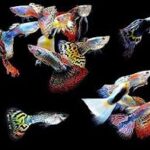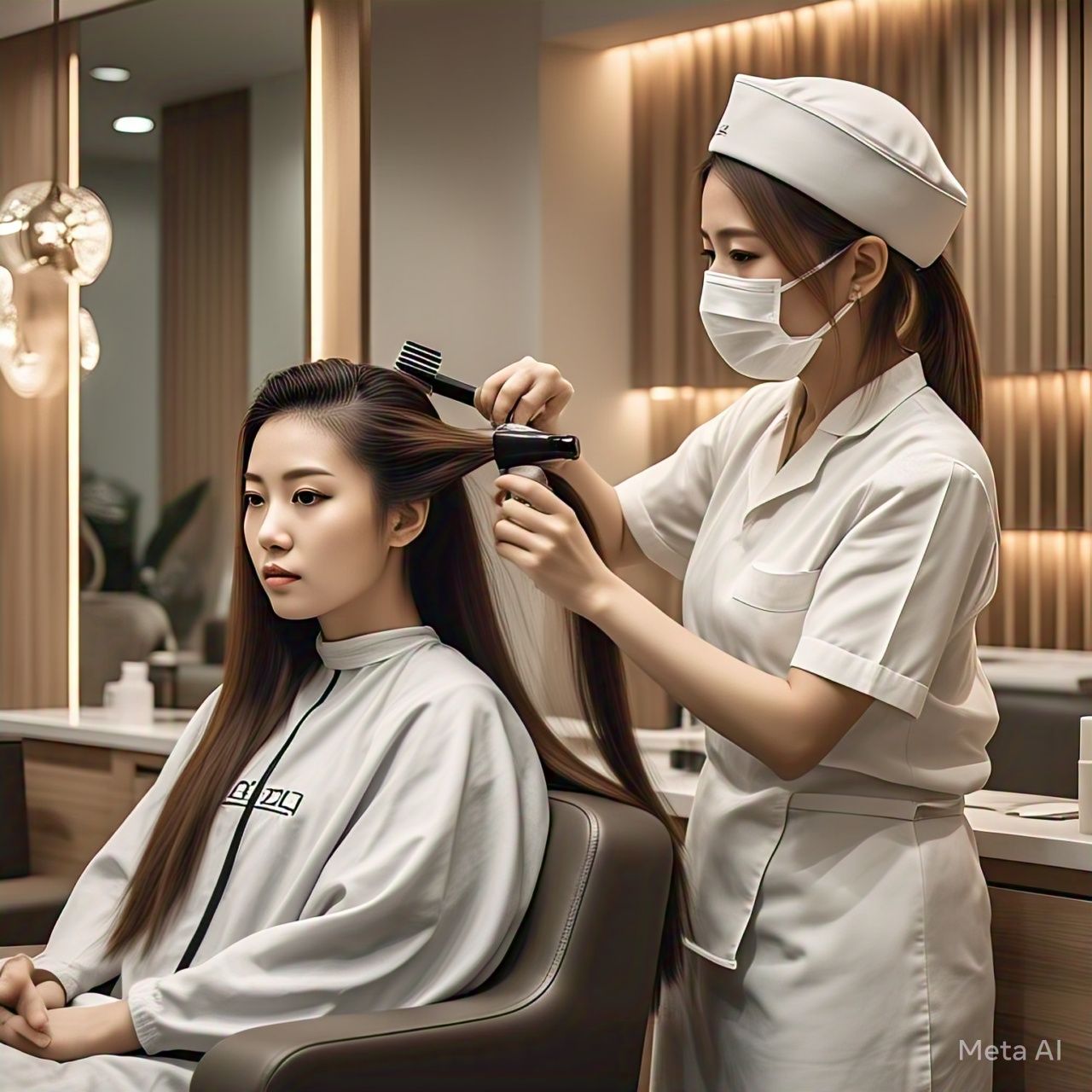The Global Influence of Asian Long Hair Trends
The Emergence of Asian Beauty in Global Fashion
Over the past decade, Asian beauty trends have taken the world by storm. From skincare routines to makeup styles, the influence of Asian culture on global fashion is undeniable. One of the most prominent trends gaining international attention is the popularity of long, luxurious hair, often seen in Korean, Japanese, and Chinese beauty standards. Unlike Western trends that frequently change with seasons, Asian long hair trends emphasize timeless elegance, health, and versatility.
The fascination with long hair in Asia is deeply rooted in cultural history. In many East Asian countries, long hair has traditionally been associated with femininity, grace, and even social status. Historical figures, such as ancient Chinese noblewomen and Japanese geishas, were often depicted with floor-length hair, symbolizing beauty and refinement. Today, modern interpretations of these traditions have merged with contemporary fashion, creating a unique blend of old and new that appeals to a global audience.
Why Long Hair is Dominating Beauty Trends
Several factors contribute to the rising popularity of Asian long hair trends worldwide. One major reason is the influence of K-pop and J-pop culture. Idols and celebrities from South Korea and Japan often sport sleek, flowing locks that fans eagerly try to replicate. Social media platforms like Instagram, TikTok, and YouTube have amplified these trends, with beauty influencers sharing tutorials on achieving the perfect “glass hair” or “hime cut.”
Another factor is the increasing demand for low-maintenance yet stylish looks. While Western beauty trends often favor bold cuts and frequent changes, Asian long hair trends focus on maintaining healthy, shiny hair that looks effortlessly beautiful. This approach resonates with people who prefer a more natural yet polished appearance.
Additionally, the global beauty industry has embraced Asian haircare products, such as serums, oils, and heat protectants, which promise to deliver the silky, smooth texture often seen in Asian hairstyles. Brands like Shiseido, Tsubaki, and Mise en Scene have gained international recognition, further solidifying the influence of Asian hair trends.
The Cultural Significance Behind the Trend
Beyond aesthetics, long hair in Asian cultures carries deep symbolic meaning. In many traditions, hair is considered a representation of one’s vitality and identity. For example, in ancient China, cutting one’s hair was sometimes seen as a sign of mourning or rebellion. Similarly, in Japan, samurai warriors would often tie their long hair in a topknot as a symbol of discipline and honor.
Modern interpretations of these beliefs still linger, making long hair more than just a fashion statement—it’s a connection to heritage. As globalization continues to blend cultures, these symbolic elements add depth to the trend, making it more appealing to those who appreciate both style and cultural storytelling.
What to Expect in This Series
This four-part series will explore the rise of Asian long hair trends in global beauty culture. The next sections will delve into the specific hairstyles that have gained popularity, the role of social media in spreading these trends, the science behind Asian haircare, and the future of long hair in the beauty industry. Each part will provide insights into why these trends have captured the world’s attention and how they continue to evolve.
Iconic Asian Long Hairstyles That Took the World by Storm
The Allure of the Classic Straight and Silky Look
One of the most recognizable Asian long hair trends is the sleek, straight hairstyle often referred to as “glass hair.” This look is characterized by ultra-smooth, shiny strands that mimic the appearance of glass. It gained massive popularity thanks to K-pop stars like BLACKPINK’s Jisoo and Red Velvet’s Irene, who frequently showcase this glossy, healthy-looking hair.
Achieving this style requires meticulous care, including regular deep conditioning, heat protection, and the use of specialized straightening tools. Many people outside Asia have adopted this trend, leading to a surge in demand for Asian hair straightening treatments like the Japanese thermal reconditioning technique.
The Romantic Waves of the “Hair Princess” Trend
Another iconic style is the soft, wavy look often seen in Korean dramas and J-pop music videos. Unlike the voluminous curls popular in Western beauty, Asian long waves are typically more subtle, creating a delicate, romantic effect. This hairstyle, sometimes called the “hime wave,” complements both casual and formal outfits, making it a versatile choice.
Celebrities like TWICE’s Tzuyu and Japanese actress Haruka Ayase have popularized this trend, inspiring fans worldwide to recreate the look. Styling involves using large-barrel curling irons or overnight braiding techniques to achieve effortless waves without excessive heat damage.
The Edgy Yet Feminine “Long Layered Cut”
While long hair often emphasizes simplicity, the layered cut adds dimension and movement. This style is particularly popular in China and Taiwan, where celebrities like Dilraba Dilmurat and Cyndi Wang showcase beautifully layered locks that enhance facial features.
The key to this trend is strategic layering, which removes bulk while maintaining length. It works well for various hair textures, from fine to thick, making it a universally flattering option. Many salons worldwide now offer specialized “Asian layered cuts” to meet the growing demand.
The Return of the “Black Hair” Movement
In recent years, there has been a resurgence of natural black hair among Asian celebrities, challenging the Western preference for dyed and highlighted locks. Stars like Liu Yifei and Jun Ji-hyun have embraced their jet-black hair, proving that dark, glossy tresses can be just as striking as any colored style.
This movement aligns with the broader push toward embracing natural beauty and reducing chemical damage. It has also sparked conversations about cultural pride, as many Asian women choose to celebrate their natural hair color rather than conform to Eurocentric beauty standards.
The Role of Social Media in Spreading Asian Long Hair Trends
How Platforms Like TikTok and Instagram Amplified the Trend
Social media has played a crucial role in the globalization of Asian long hair trends. Platforms like TikTok, Instagram, and YouTube have become hubs for beauty enthusiasts to share tutorials, product reviews, and styling tips. Viral challenges, such as the “Korean glass hair transformation” or “Japanese hime cut tutorial,” have encouraged millions to experiment with these looks.
Korean and Japanese influencers, in particular, have gained massive followings by showcasing their haircare routines. Videos demonstrating the “10-step haircare method” or “how to get K-pop idol hair” regularly garner millions of views, proving the worldwide fascination with Asian beauty secrets. The visual nature of these platforms makes them ideal for showcasing the sleek, shiny, and effortlessly elegant aesthetic of Asian long hair.
The Power of K-Pop and J-Pop Influencers
K-pop and J-pop idols have become global beauty icons, with their hairstyles often setting trends overnight. When a beloved idol debuts a new long hairstyle—whether it’s BLACKPINK’s Lisa with her waist-length black hair or BTS’s Jungkook with his flowing locks—fans rush to replicate it.
Fan pages and dedicated beauty bloggers dissect these looks, breaking down the exact products and techniques used. This level of engagement creates a ripple effect, where salon appointments for “idol-inspired haircuts” spike after major music releases or award shows. The influence is so strong that some hairstyles, like the “Wonyoung long layers” (inspired by IVE’s Jang Wonyoung), have become permanent fixtures in beauty discussions.
The Rise of ASMR and Relaxing Haircare Content
Another unique aspect of Asian long hair trends on social media is the popularity of ASMR (Autonomous Sensory Meridian Response) haircare videos. These clips, often featuring slow-motion hair brushing, oil treatments, and scalp massages, emphasize the sensory pleasure of maintaining long, healthy hair.
Channels specializing in “hair grooming ASMR” have millions of subscribers, many of whom are drawn to the calming, almost therapeutic nature of the content. This trend reinforces the idea that haircare is not just about aesthetics but also about self-care and relaxation—a philosophy deeply embedded in Asian beauty culture.
Challenges and Criticisms of the Trend
While the spread of Asian long hair trends has been largely positive, it hasn’t been without controversy. Some critics argue that the obsession with ultra-straight, silky hair perpetuates unrealistic beauty standards, especially for those with naturally curly or coarser textures. Others point out that the trend can sometimes lead to cultural appropriation when elements of traditional Asian hairstyles are adopted without acknowledgment of their origins.
Despite these debates, the trend continues to thrive, with many people adapting it to suit their personal style rather than copying it exactly. The emphasis on hair health and minimal damage has also been a welcome shift in the beauty industry, encouraging more people to prioritize long-term care over quick, damaging styling methods.
The Future of Asian Long Hair Trends in Global Beauty Culture
Sustainability and the Shift Toward Natural Haircare
As the beauty industry becomes more environmentally conscious, Asian long hair trends are evolving to align with sustainable practices. Traditional Asian haircare has always emphasized natural ingredients like camellia oil, ginseng, and rice water—ingredients now gaining global popularity for their minimal environmental impact. Brands are increasingly adopting eco-friendly packaging and cruelty-free formulations to meet the demands of ethically minded consumers.
The “less is more” philosophy of Asian haircare also supports sustainability. Instead of frequent coloring or heat styling, the focus is on maintaining hair health with minimal chemical processing. This approach not only reduces waste but also promotes long-term hair vitality, making it a trend likely to endure as sustainability becomes a priority in beauty culture.
Innovations in Hair Technology and Customization
Advancements in hair technology are shaping the future of Asian long hair trends. Innovations like AI-powered hair diagnostics, personalized scalp treatments, and smart hair tools (such as temperature-controlled straighteners) are making it easier to achieve salon-quality results at home. South Korea and Japan, already leaders in beauty tech, are pioneering these developments, which are quickly spreading worldwide.
Another emerging trend is hyper-customized haircare. Brands now offer tailored serums and treatments based on individual hair texture, climate, and lifestyle. This shift toward personalization ensures that Asian-inspired haircare is accessible to diverse hair types, moving beyond the one-size-fits-all approach.
Cultural Exchange and the Blending of Beauty Ideals
The globalization of Asian long hair trends has led to a fascinating blend of beauty ideals. Western salons now incorporate techniques like Korean “digital perms” or Japanese “straight perms,” while Asian stylists experiment with layered cuts and balayage highlights from Western traditions. This cross-cultural exchange enriches the beauty landscape, creating hybrid styles that appeal to a broader audience.
However, this fusion also raises questions about cultural authenticity. As Asian haircare gains prominence, there’s a growing call to credit its origins rather than treating it as a passing trend. Educating consumers about the cultural significance of these practices—such as the historical importance of long hair in Confucian societies—can foster deeper appreciation and respect.
Conclusion: Why Asian Long Hair Trends Are Here to Stay
The rise of Asian long hair trends reflects a broader shift in global beauty culture toward health, versatility, and cultural inclusivity. What began as a regional preference has become a worldwide phenomenon, thanks to the power of social media, celebrity influence, and a shared desire for low-maintenance yet stunning hair.
Looking ahead, these trends will likely continue evolving, driven by technological advancements and a growing emphasis on sustainability. Yet, at their core, they remain rooted in a timeless appreciation for hair as a symbol of identity and elegance. Whether through the sleekness of glass hair, the romance of hime waves, or the innovation of personalized haircare, Asian beauty standards have redefined what it means to have long, luxurious locks—and their impact is far from over.










